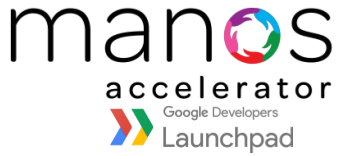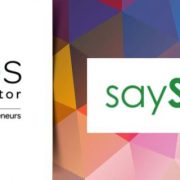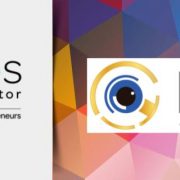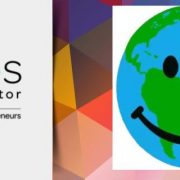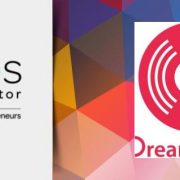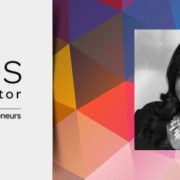Making Payments Possible for Small Businesses in Developing Countries
QUICK PITCH:
saySquare is redesigning payments in Latin America. Its trusted platform allows small businesses to accept payments using SMS like a mobile POS. With their solution, users and merchants won’t need specialized hardware or smartphones to receive payments.
THE BUSINESS:
Small businesses in developing countries have many obstacles that don’t allow them to grow economically or reach their core objectives. One of those main obstacles is the lack of trust that the banking sector has in the niche; this is reflected in the lack of access to POS devices that streamline small business sales and move them in highly competitive markets.
saySquare is an alternative payment method that will allow small business in Latin America to grow. Specifically, saySquare offers a mechanism to receive payments through a platform using SMS on any cell phone with any mobile carrier in a country – safely and quickly.
THE “AHA” MOMENT:
Cristian Espinoza, one of the founders of saySquare, was running late to a meeting back home in Honduras. He didn’t have time to make lunch, so he quickly stopped at a small taco shop on his way to the meeting. When he was about to pay, the cashier told him that she didn’t have change for a large bill, so Cristian tried to pay with his credit card. Unfortunately, the cashier didn’t have a POS either. Frustrated, Cristian had to leave without his tacos and with an empty stomach. Most importantly, the taco shop missed out on a potential sales transaction.
The saySquare founders realized that this sort of thing happens quite often in Honduras and similar places with many small businesses. As native Latin Americans, the saySquare team saw that there was a great need to support the small business sector, and saw that they could do so through today’s technology. Consequently, by helping small businesses grow, they would foster the progression of the nation’s overall economy.
This was their “AHA” moment. They felt that there had to be a better way to use technology and allow anyone, anywhere, to accept payments. They decided to do something for the sake of hungry “taco lovers” and small businesses everywhere.
HOW IT MAKES MONEY:
saySquare applies a 3% fee per transaction.
BUSINESS IT COULD DISRUPT:
Financial Services and Mobile Payments for small businesses in developing countries. saySquare’s SMS platform makes it easy and safe for any merchant to use in their business, as to avoid missing out on potential revenue.
MARKET SIZE:
Small businesses in Latin America represent 90% of companies, and there are almost 4 million small businesses operating over a market of 146 million consumers. Furthermore, saySquare is specifically designed for places like Latin America where 80% of the population uses basic mobile devices. They aim to partner with merchants who seek a better way to increase their sales but whose businesses are too small to work with traditional credit card networks or systems. saySquare is well positioned in hopes of tapping into the purchasing power of Latinos within Latin American countries and eventually the US market.
LIKELY COMPETITORS:
In the US, the competition is heating up in the mobile payments market. However, for these companies, Latin America may be viewed as a risky, small market or they wrestle with how to target Latino users effectively. Solutions like Google Wallet or PayPal may enter the Latin American market to compete. However, as of now there are no major competitors in Latin America.
PARTNERSHIPS OR COLLABORATIONS:
saySquare is currently in discussion with various banks to explore potential partnerships. If you are interested in speaking to saySquare with regards to potential partnerships or collaborations, please contact info@saysquare.com.
MANAGEMENT TEAM:
Cristian Espinoza, Leonardo Amador, Armando Alvarado and Wilfredo Guevara
RANDOM QUESTIONS FOR SAYSQUARE:
Who are your role models?
Answer: As an entrepreneur, we find inspiration for many in the startup world and we try to learn from them as much as possible, both successes and failures. However, Jack Dorsey, CEO of Square and Co-founder of Twitter, stands out because he did something outside of his comfort zone. Also, Ev Williams, Co-Founder of Twitter, because he has been an effective leader. Lastly, Steve Jobs because he always tried to create the best products for customers even when customers did not know what they want.
What’s the best thing about being an entrepreneur?
Answer: You get to meet a lot of brilliant people and you learn from them. You learn more from experiencing entrepreneurship than from reading books about entrepreneurship.
What’s the best advice that anyone has given you?
Answer: #hacelopue – it’s slang that people use in Honduras that means “stop talking about it and just do it.” When we started hearing this, it motivated us to focus on saySquare and take action to complete it.
What advice would you give to others?
Answer: Don’t be afraid of taking a leap of faith. Don’t be afraid of failure, because you learn more from failure than from following the risk-free path.
Quick Pitch features most innovative early-stage startups founded by Latino entrepreneurs from the Manos Ventures program. It profiles company pitches, interviews and guest columns by experts in the startup scene.
